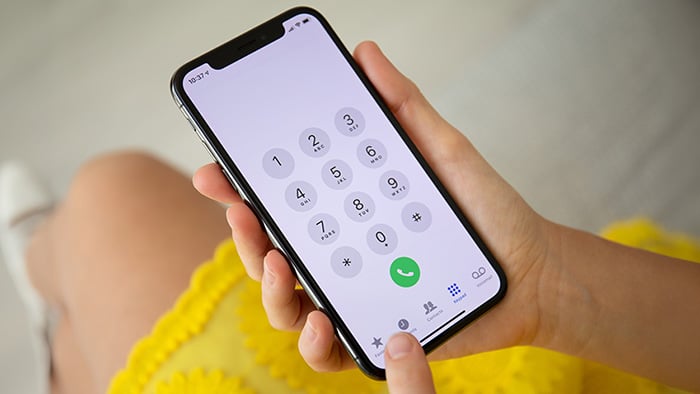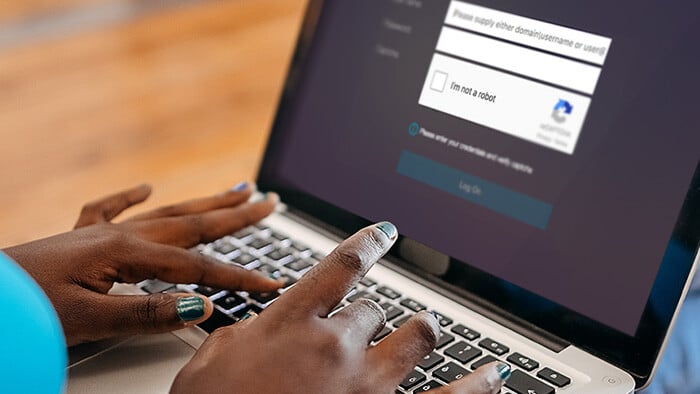What is cyberstalking?
Cyberstalking is the persistent harassment of a victim through distressing communications sent via the internet or other electronic means. Internet stalking can happen through email, text message, social media, web forums, GPS trackers, or any type of digital community, channel, or other online tool.
But what does cyberstalking mean legally, and how does it differ from the more mundane annoyance of internet trolling? Cyberstalking is defined by the repetition of abuse, which is a serious crime in many jurisdictions. Incessant computer stalking can provoke an array of mental health issues, including stress disorder, anxiety, and depression.
Unfortunately, online stalking isn’t particularly rare. The US Department of Justice estimates that 14 of every 1,000 adults are victims of stalking every year. But only about a quarter of those victims report some form of cyberstalking — most often via email and instant messaging.
 Cyberstalkers harass victims through a variety of online communication platforms.
Cyberstalkers harass victims through a variety of online communication platforms.
Examples of cyberstalking and harassment
Specific examples of cyberstalking vary — some you may have heard of happening to others or even experienced first-hand. The most common examples of online harassment include:
-
GPS tracking refers to using GPS tools to track someone’s physical location without their permission.
-
Catfishing involves creating fake social media accounts to impersonate someone and approach victims online.
-
Social media stalking refers to following a victim’s social footprints to monitor behavior and physical location.
-
Fake websites are blogs or websites created with false information about a victim.
-
Webcam hijacking entails hacking into a person's webcam to spy on them.
-
Digital spying means installing spyware on a person's phone or device to spy on their electronic communications or steal sensitive data.
Is cyberstalking a crime?
Cyberstalking is a criminal offense in many countries, and nearly every state in the US outlaws online stalking or harassment. Specific statutes and penalties vary, but online stalking can result in jail time for serious or repeat offenders.
The US also has federal laws against cyberstalking, including the Violence Against Women Act, which classifies cyberstalking as part of the federal interstate stalking statute — making cyberstalking a federal cybercrime.
In Europe, cyberstalking is a criminal offense in Poland and the UK, and Spain has created avenues to anonymously report cybercrimes, including cyberstalking.
But lines are blurred when it comes to cyberbullying and doxxing. In some jurisdictions, these forms of online harassment may be crimes themselves, or they have the potential to cross into criminal cyberstalking. In other states, the law may be less strict, or ambiguous.
How to stop cyberstalking?
The first step to take when being cyberbullied or cyberstalked depends on your own mental state and context of the abuse. If you are a minor or feel vulnerable, it's best to alert a trusted family member or friend immediately so they can support you.
Here’s what to do if you are being cyberstalked:
Tell the individual you no longer wish to be contacted
Worrying about how to deal with cyberstalking can be daunting, so it’s best to start with the easiest steps. Telling the person making unwanted contact to stop may, or may not, have the desired effect, but it certainly prevents them from feigning ignorance later on. Express yourself clearly and simply, and do not mirror their abuse.
Block the individual and report them
If unwanted communications continue, block the person on whichever channels they use to contact you. Each social media platform has an option to block a user and all smartphones can block specific contacts.
How to block a phone number on iPhone:
-
Launch the Phone app and tap Recent and find the number you want to block.
-
Tap the Info icon (lowercase “i” in a circle).
-
Scroll to the bottom and tap Block this Caller.
-
Confirm by tapping Block Contact.
How to block a number on Android:
-
Tap the phone number you want to block.
-
Scroll to the bottom and tap Block Number.
Follow a similar path to block an SMS on any phone. Go to the text message and look for the Info or Block Caller options.
How to block someone on Facebook:
-
Log in to Facebook and click the down arrow in the top-right corner.

-
Click Settings & Privacy and then select Settings again.

-
In the left panel, click Blocking.

-
Here you can block specific Facebook users, messages, event invites, and more.

How to block someone on Twitter:
-
Go to the profile page you want to block.
-
Click More on their page.
-
Select Block and confirm.
This will ban the user from sending direct messages, seeing your profile when logged into Twitter, or engaging with your tweets. But a cyberstalker may still be able to bypass the block feature via alternative accounts or third-party apps — especially if you do not have the Protected Tweets feature enabled.
Do not respond to any interaction or activity
A response of any kind can encourage the cyberstalker, and potentially weaken your case that their communications amount to online stalking. For your own mental wellbeing and safety, avoid reading harassing messages altogether if they still manage to reach you. This applies to private messages and those sent on public forums.
Deactivate any accounts
If necessary, you can make contacting you even more difficult for the cyberstalker by deactivating any accounts they use to reach and harass you. It's a frustrating step to remove yourself from a community, app, or channel you enjoy, but protecting yourself by hindering the cyberstalker's ability to contact you is the top priority.
All social media platforms have an option to permanently delete your account, and many have the option to suspend your account temporarily. Both options will remove your profile, comments, and interactions with others from the platform.
Save evidence and notify the authorities
If the stalking and bullying escalates, do not hesitate to contact the authorities. The first point of contact should be local law enforcement, such as the police department. You may also need to escalate further and report to the FBI’s Internet Crime Complaint Center.
To effectively report cyberstalking, you should collect evidence of the harassment. So, as tempting as it may be, don’t delete the text, emails, or comments made by the stalker. Instead, document them by taking screenshots of the communications and saving them on your device or even printing them out for hard-copy storage. Being able to access this evidence could be critical to support your case.
Create a safety plan
It’s hard to predict if and when cyberstalking will escalate into physical harassment or violence. Creating a safety plan is a prudent way to protect yourself while you resolve the situation. Planning how to react to further unwanted contact will also help you stay consistent and confident with your approach.
When creating your cyberstalking safety plan, consider the following:
-
Confide in a trusted person, tell them about your safety plan, and keep them updated as the situation develops.
-
Create a list of if/then scenarios and have action points ready. Be prepared to adapt if the cyberstalker becomes more aggressive.
-
You may receive pushback from friends or family who think you’re overreacting. Trust your instincts, and think about how to respond forcefully but constructively.
-
Identify emergency contacts among trusted friends, family, and local authorities in the event that the cyberstalking escalates further.
Take legal action against cyberstalker
Now it's time to bring the cyberstalker to justice. There are various laws across the US, UK, and EU to help you:
Once you've contacted the local authorities and reported the crime, ask them for further guidance and support in pursuing legal action.
How to prevent cyberstalking?
The best cyberstalking prevention is control of the personal information you make public online. Oversharing can leave you vulnerable not only to cyberstalkers, but hackers, phishing attacks, and other threats, so always follow best practice for digital safety and privacy, and use VPNs and other cybersecurity tools whenever necessary.
 Digital hygiene
Digital hygiene
Online stalkers are opportunists, so managing your public online presence and being privacy-savvy can go a long way to stopping harassment from starting or escalating. This means staying safe on public Wi-Fi, logging off all applications, hiding your IP address, browsing anonymously with a private browser, and protecting mobile devices with the best privacy and security apps for iPhones and Android.
 Disable your geolocation settings
Disable your geolocation settings
Your phone or computer might be giving away information about your physical wearabouts due to your camera or social media app settings, or because of a spyware infection. First, take steps to remove spyware from your PC or spyware on your iPhone, then adjust your phone settings to disable geolocation in apps.
Find the geolocation settings in your phone and toggle location services on or off, depending on your needs and whether specific apps actually need access to your physical location.
 Strengthen your privacy settings
Strengthen your privacy settings
Despite social media stalking laws, cyberstalking and social media go hand-in-hand, and social stalking is made easy by the nature of the platforms. Even if you are not currently experiencing Facebook cyberstalking, change your Facebook privacy settings and update your Instagram privacy settings to control who can see what.
Stay up to date on the best security and privacy extensions for Google Chrome and ensure you have two-factor authentication established on important digital access points. And create strong, unique passwords for all your online accounts.
 Check what is being published about you online
Check what is being published about you online
There might be a ton of information about you readily available for a cyberstalker to sweep up, so it’s important to know how to find and remove personal information from the internet. Try searching your own name online and see what you find. If photos or information you thought were private are being shared online, that’s one of the clearest signs of cyberstalking.
If you see something you don't like, you can request Google remove it from their search results, or ask them to delete all your photos from Google photos. If your case falls under the EU's General Data Protection Regulation (GDPR) you also have the right to know what personal data organizations and businesses have about you, and request it be erased. And make sure you know how Google uses your personal data.
 Update your software
Update your software
Cybrerstalkers might be able to hack into your system via outdated software. Do a health check of all programs that exist on your PC or Mac. If you don't use them, ditch them. If you do use them, update them. And if you don't have antivirus software installed, download it today.
Block trackers and browse privately with Avast Secure Browser
Between cyberstalkers, advertisers, websites, and even your internet service provider, there’s always somebody trying to scoop up your data and track your activity online. But thanks to Avast Secure Browser, you can regain control of your digital space and keep snoops at bay.
Engineered from the ground up with your privacy as the top priority, Avast Secure Browser comes with built-in features to mask your digital identity and prevent online tracking. Thanks to password protection, automatic malicious website and download blocking, and seamless VPN integration, browsing has never been safer.

 Cyberstalkers harass victims through a variety of online communication platforms.
Cyberstalkers harass victims through a variety of online communication platforms. 














